The Vacheron Constantin Patrimony Perpetual Calendar Ultra-Thin
In the rarefied world of ultra-thin perpetual calendars, Vacheron's Patrimony is a classic among classics.
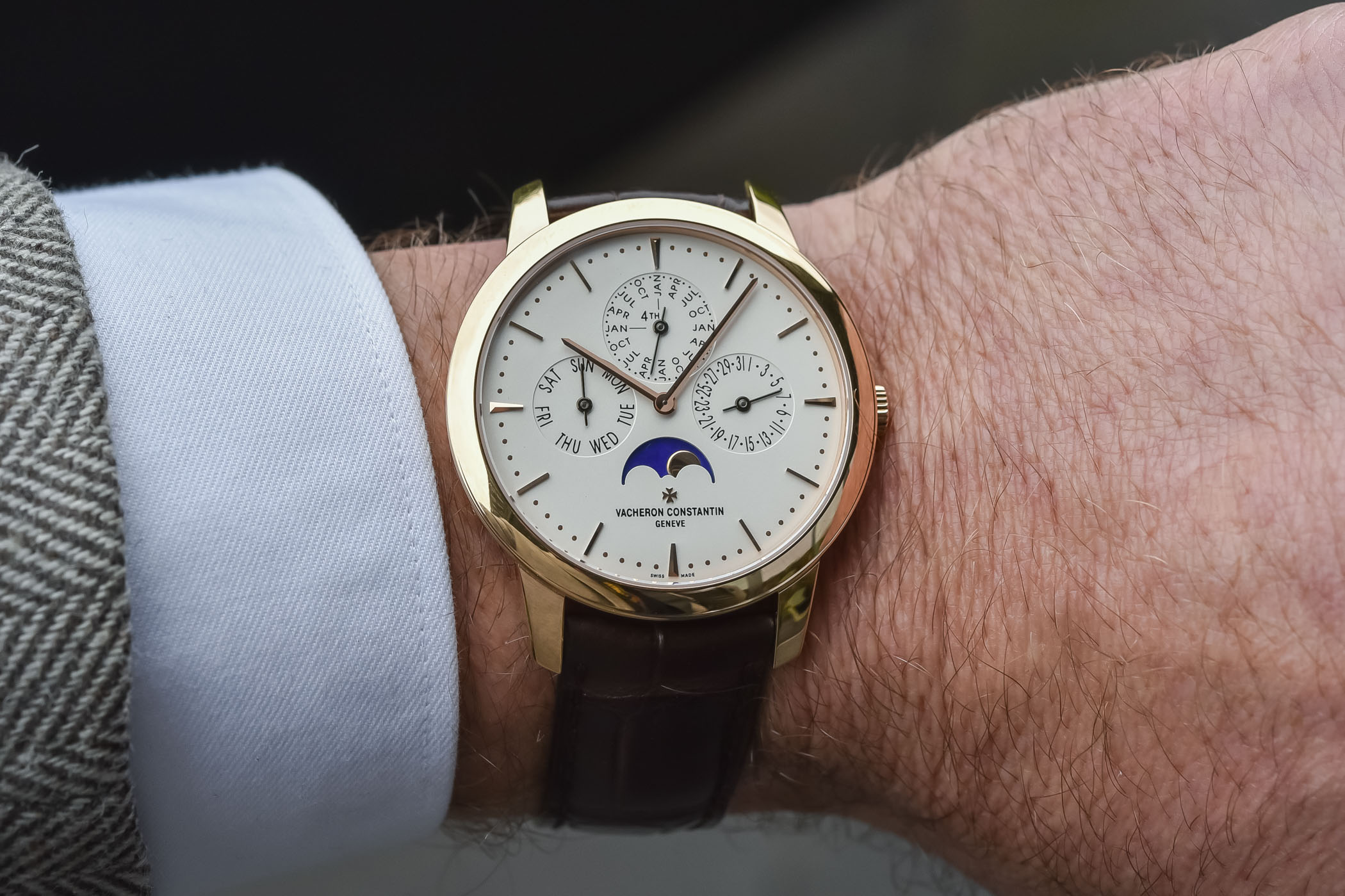
The epitome of technical complexity and restrained elegance, the Vacheron Constantin Patrimony Perpetual Calendar Ultra-Thin was first presented in 2011. Appearing with a blue dial (2019) and a slate grey dial (2017), the most classical interpretation is the present pink gold model with a silvery opaline dial. Retaining the essential styling of the Patrimony collection that references VC’s minimalist 1950s watch designs, the watch is equipped with the legendary ultra-thin automatic calibre 1120 QP. Let’s have a closer look at this supremely elegant model.
Vacheron Constantin produced its first perpetual calendar in 1884 (inventory no. 10155), a double-sided gold pocket watch that automatically recognised months with 28, 29, 30 or 31 days. The main dial indicated the time, while the hinged caseback opened to reveal four elegant counters with phases and age of the moon, the day of the week, months and leap year indicator and the date. By 1905, Vacheron had upped the complexity of an already complex perpetual calendar and combined it with a minute repeater and a split-seconds chronograph. Although the brand had made calendar wristwatches since the 1930s, it wasn’t until the 1980s that it turned to perpetual calendar wristwatches with reference 43031 followed a year later, in 1984, by a skeletonised version (ref. 43032). Relying on the ultra-thin Jaeger-LeCoultre 920 ébauche, Vacheron Constantin turned to Dubois-Dépraz to help with the perpetual calendar module resulting in the calibre 1120 QP. Still used today but produced in-house by Vacheron Constantin, the particularity of this calibre is the sub-dial with 48 months and the leap year. Capable of handling all the vagaries of the Gregorian calendar (see box below), the perpetual calendar will not need any adjustments until 1 March 2100.
Taming the calendar
The Gregorian calendar is a hard beast to tame and when English clockmaker Thomas Mudge decided to tackle a pocket watch that would master all the vagaries of the Pope’s calendar he was faced with a monumental task. His masterpiece of mechanical engineering, finished in 1762, kept track of the different length of months (28, 30 and 31 days) and the extra day every four years during a leap year (29 days).
Pope Gregory was a little concerned that the Julian calendar (introduced by Julius Caesar in 46 BCE) had drifted a full 10 days off course interfering with important dates like Easter, which were out of sync with the seasons. To compensate for the discrepancies between the Julian calendar and the solar or tropical year – the time required for a complete revolution of the Earth around the Sun – the Pope enlisted astronomers in 1582 to fix the mess and eventually authorised the addition of a 29th day to February every four years. However, it wasn’t quite as straightforward as that. Besides determining dates in the ecclesiastical calendar, the Gregorian reform set the rule for leap years and answers the question why years like 1700, 1800, 1900, 2100 and 2300 are not leap years, but why 1600, 2000 and 2400 are leap years. According to the Gregorian reform, every year that is exactly divisible by 4 is a leap year. However, if the year can be divided by 100 (centennial year) it is NOT a leap year… and here is the trick: if it is divisible by 400, though, it is a leap year. This is why those of us lucky enough to be alive with a perpetual calendar on our wrists will have to remember to adjust the date on 28 February 2100.
For more details about the different types of calendar watches, please consult this installment of A Technical Perspective.
The Patrimony Perpetual Calendar
The Patrimony collection takes its design cues from Vacheron Constantin’s models produced in the 1950s and is characterised by watches with round cases and minimalist dials. It’s a collection that favours sobriety, understatement and elegance incarnated by models like the Self-Winding 36mm or the impressive Patrimony Ultra-Thin Minute Repeater and the sublime Moon Phase Retrograde Date Excellence Platine.
The perpetual calendar follows the subtle design cues of the Patrimony family and reveals its flowing lines and attractive symmetry with quiet confidence. Housed in a 41mm 18k pink gold case with a slim height of just 8.9mm, the case is classic Patrimony with a slightly sloping bezel and short lugs. The case is polished throughout to highlight its elegant dress watch appeal.
Set against the domed silvery opaline dial, the layout of the calendar functions is traditional and easy to read with the date at 3 o’clock, the day of the week at 9 o’clock, 48-months and leap year indications at 12 o’clock, and the phases of the moon at 6 o’clock. The fact that the dial is a light colour makes it seem larger than its blue and grey siblings, and it attracts far more light.
In keeping with the refined 1950s vintage air of the Patrimony collection, the applied hour markers are crafted in pink gold and accompanied by a discreet ‘pearl’ minute track. Looking at the broader markers at 3, 6, 9 and 12 o’clock, you can appreciate the work that has gone into faceting their profiles. Like the hour markers, the hour, minute and calendar hands and the moons are also crafted in solid 18k pink gold.
Calibre 1120 QP
The slim case height is made possible by an ultra-thin movement – the calibre 1120 QP – based on the legendary automatic calibre 1120 of 1967 with its 2.45mm height. Designed and manufactured by Jaeger-LeCoultre as calibre 920, the ultra-thin ébauche was used by Patek Philippe, Audemars Piguet and Vacheron Constantin, but never by Jaeger-LeCoultre. Now manufactured in-house by Vacheron and certified with the Hallmark of Geneva, the incorporation of the QP module results in a height of just 4.05mm.
Considering the complexity of a perpetual calendar movement that has to adjust to calendar irregularities mechanically, the degree of miniaturisation obtained with this 276-part calibre is remarkable. The openworked Maltese cross-shaped rotor reveals the finely hand-decorated movement with Côtes de Genève, bevelled edges and circular graining on the base plate. Beating at a sedate rate of 2.75Hz/19,800vph, the power reserve is 40 hours.
The Vacheron Constantin Patrimony Perpetual Calendar Ultra-Thin in pink gold comes on a dark brown alligator strap with a pink gold folding clasp. It retails for EUR 83,000.
More information at Vacheron Constantin.

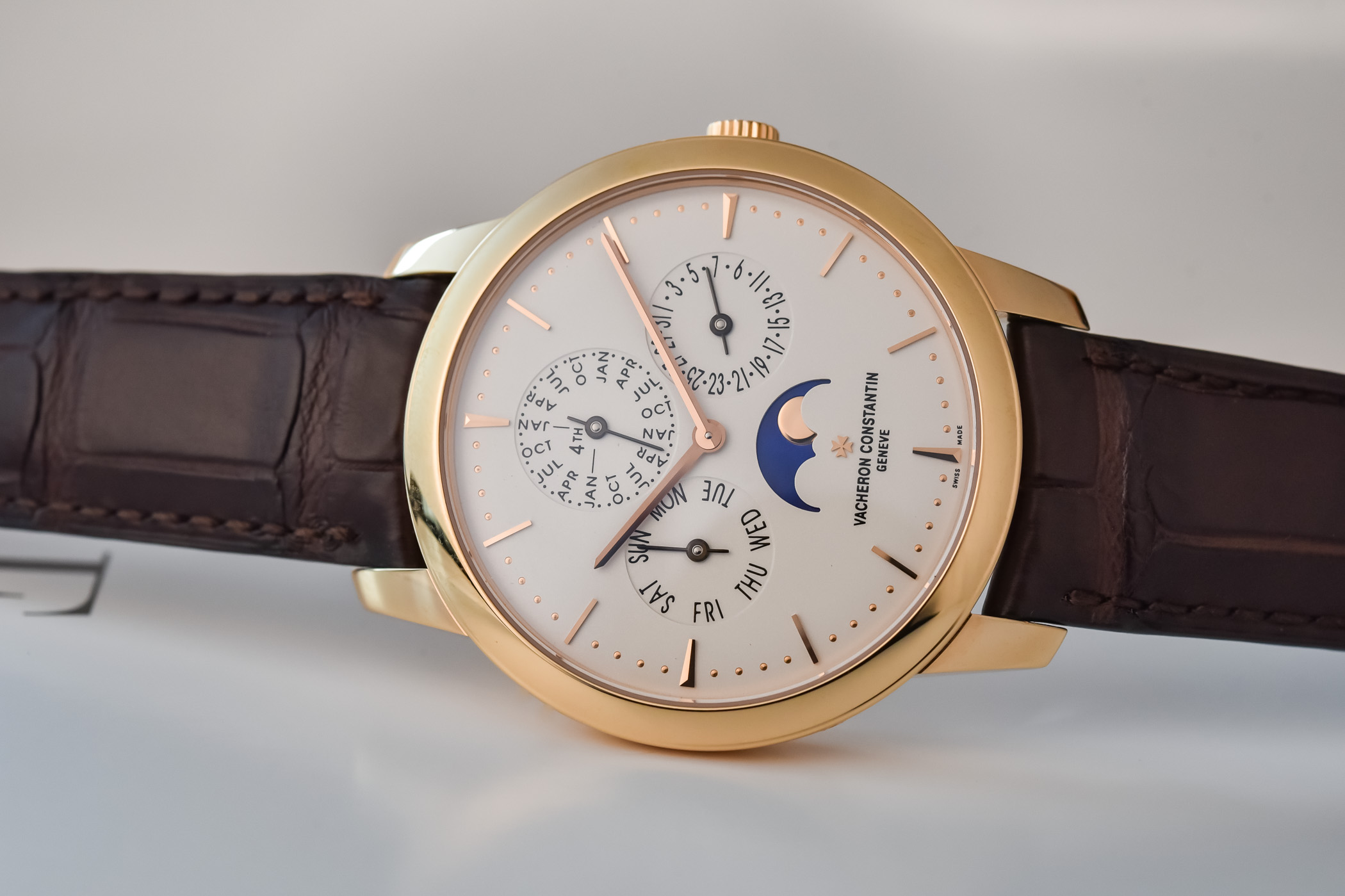
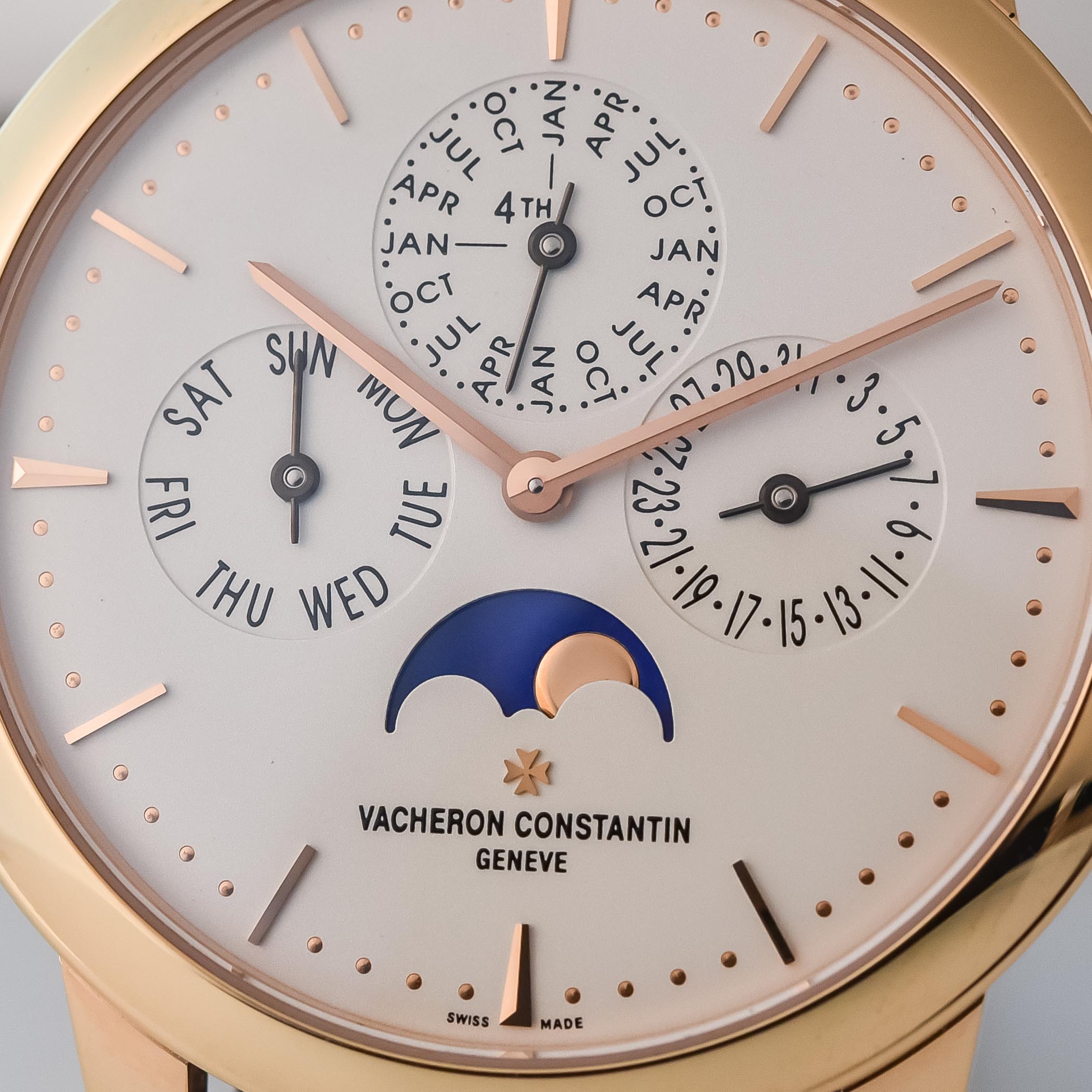
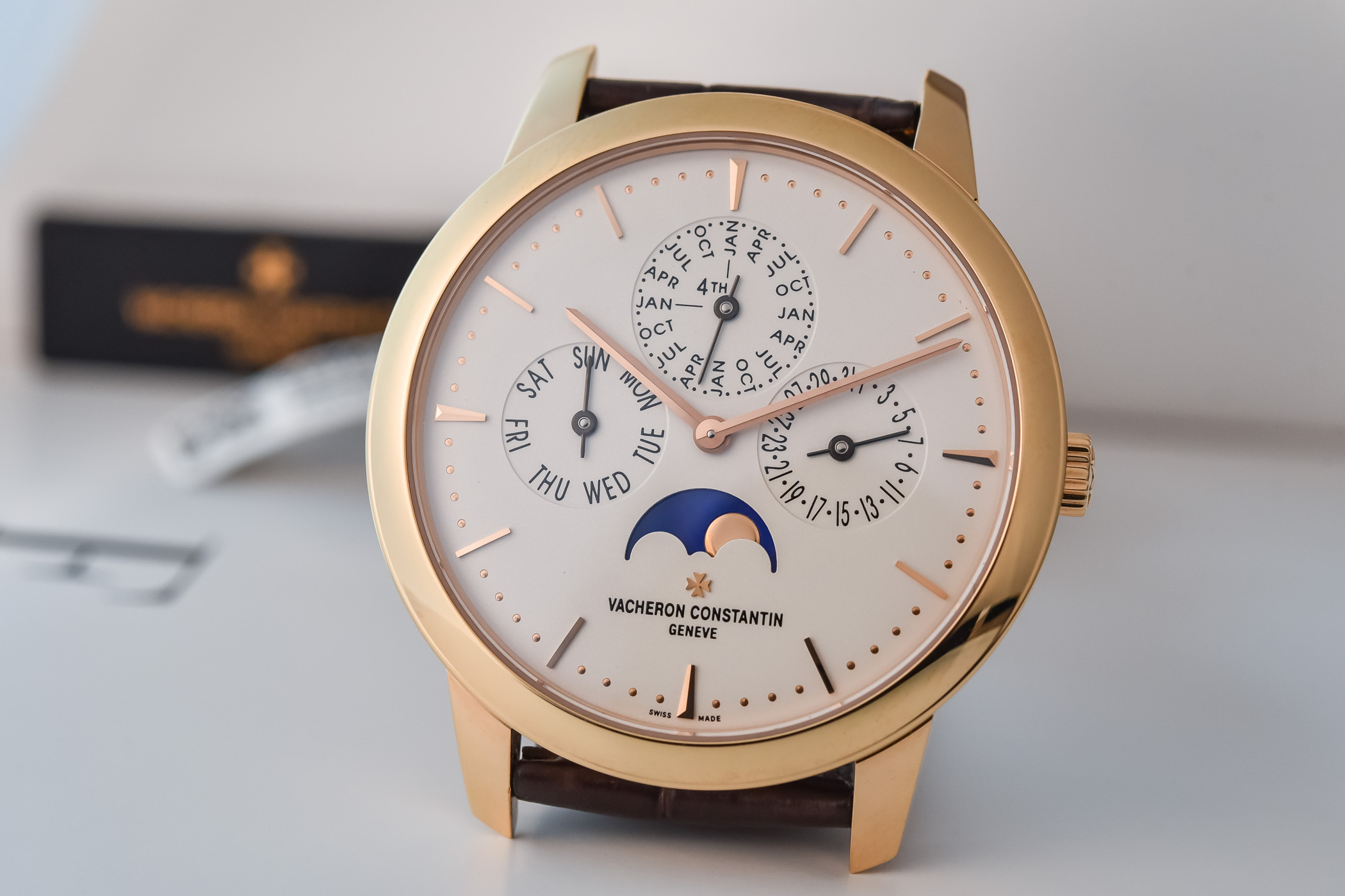
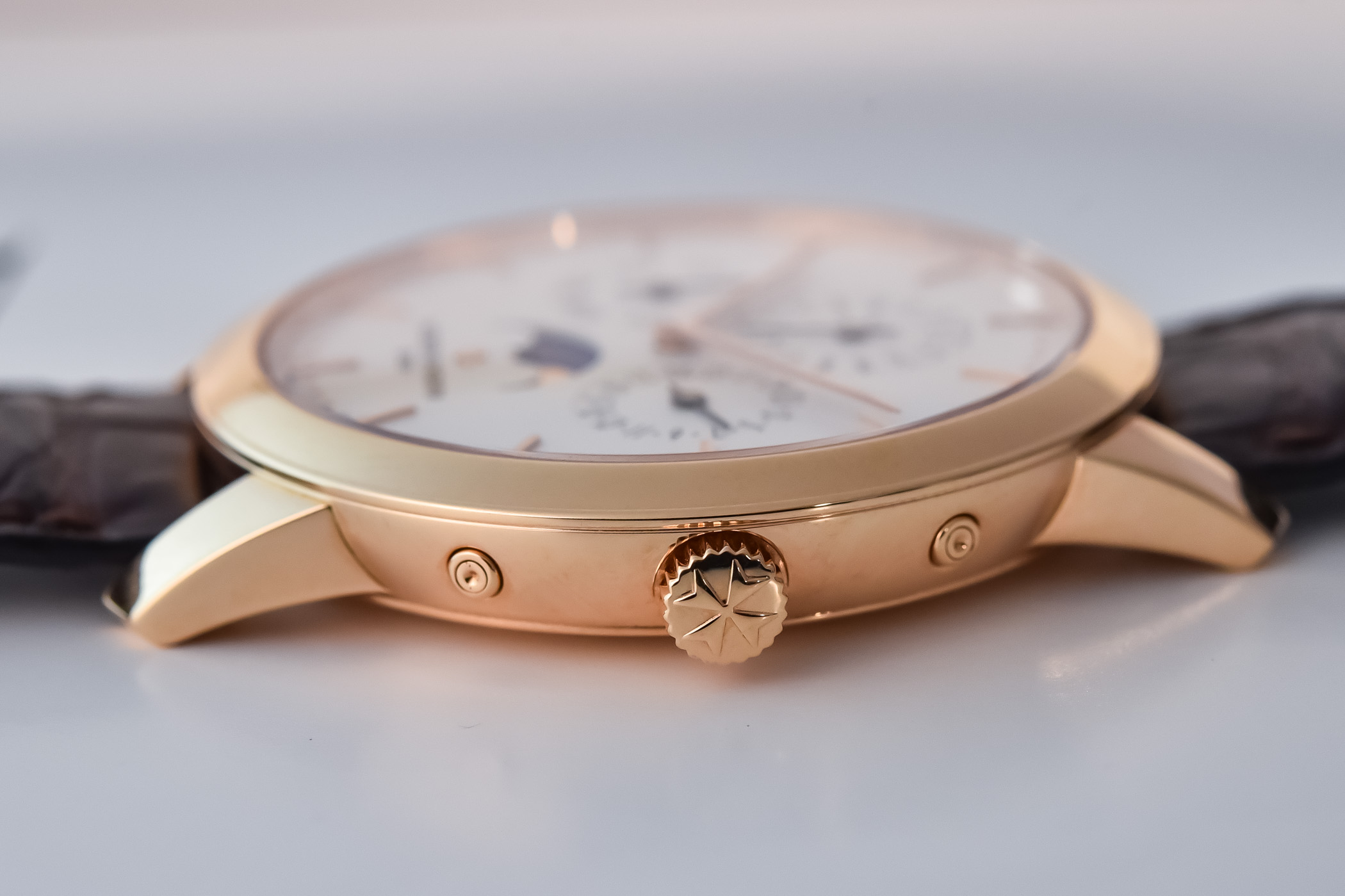
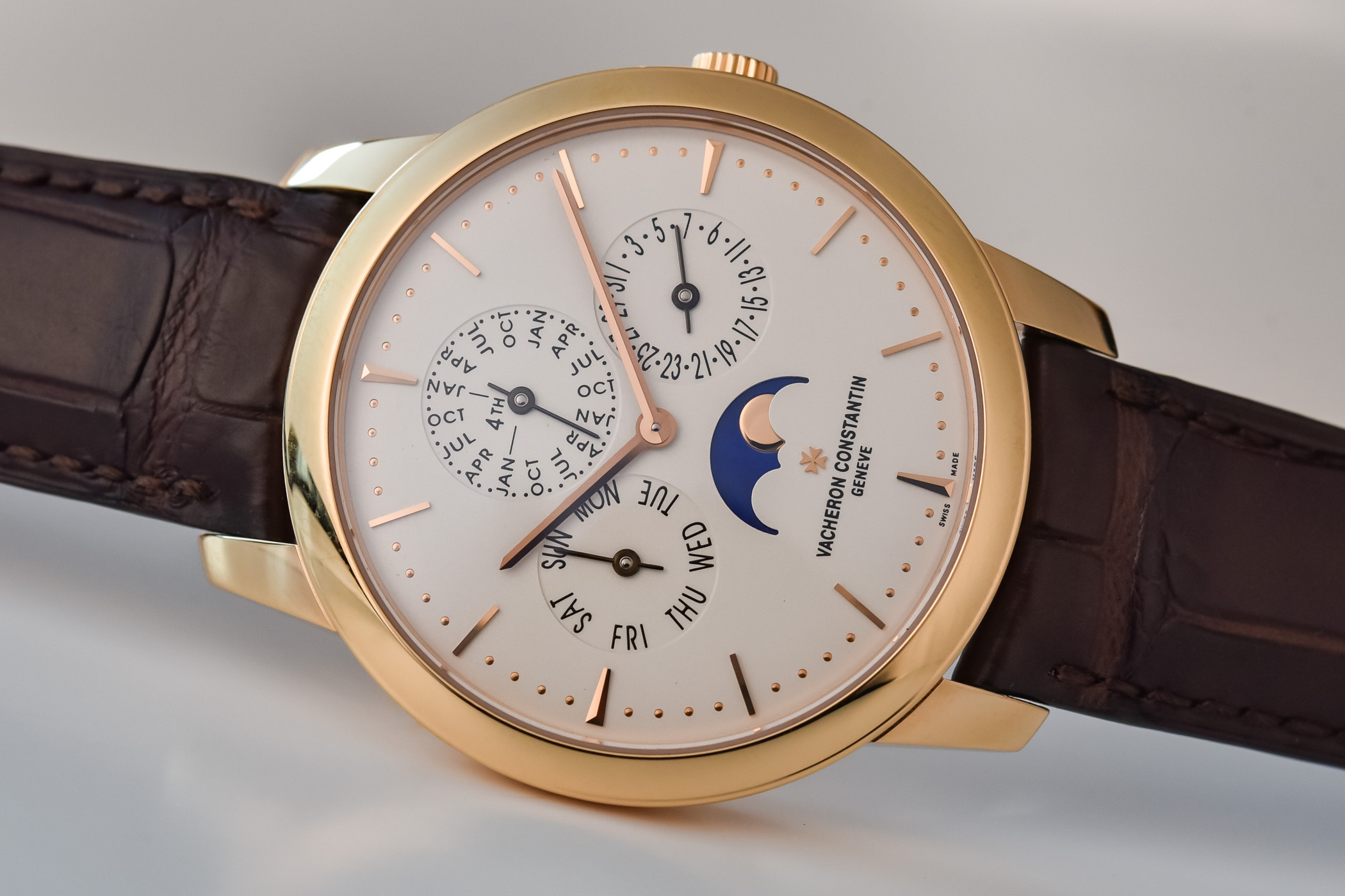
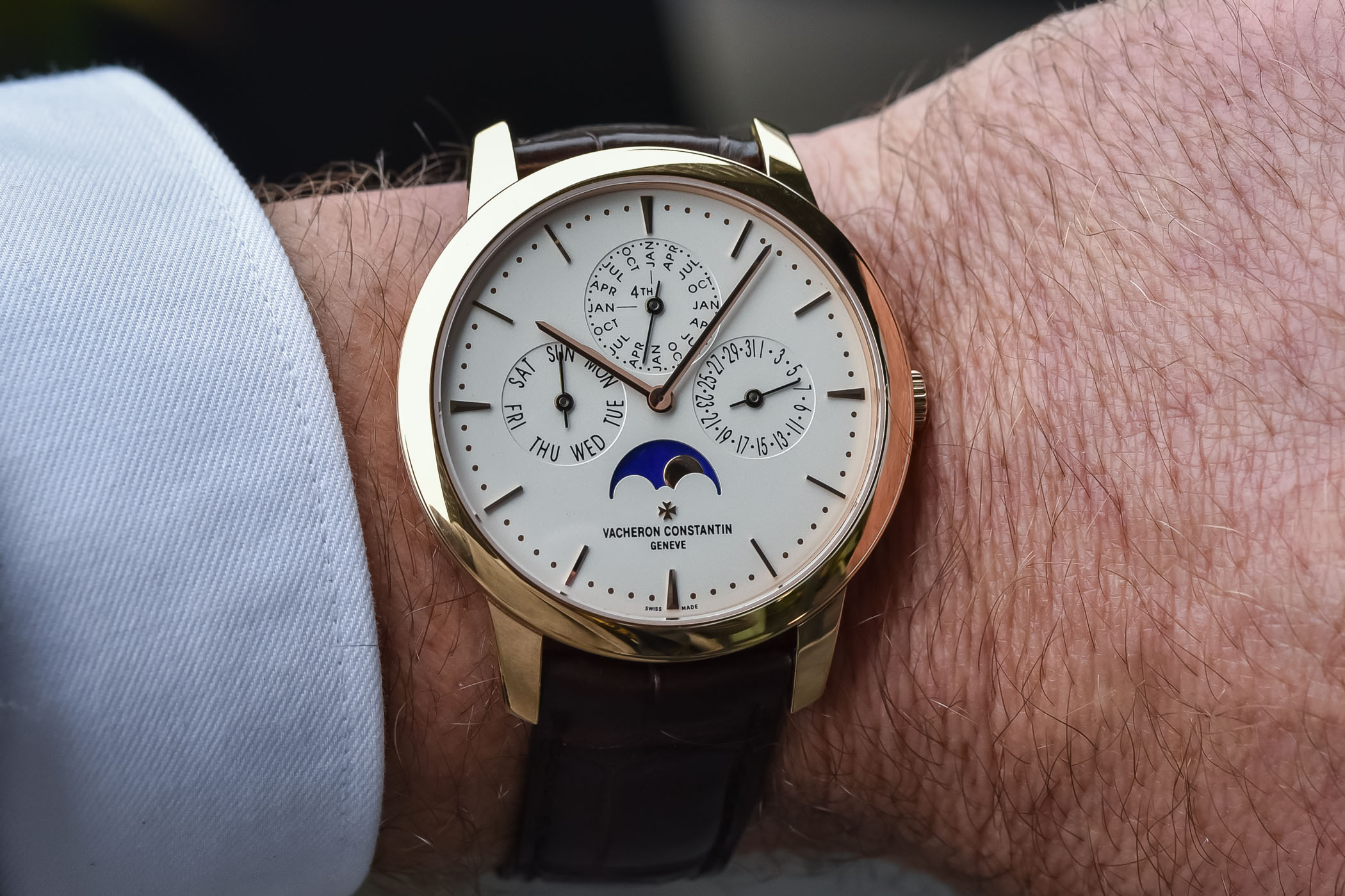
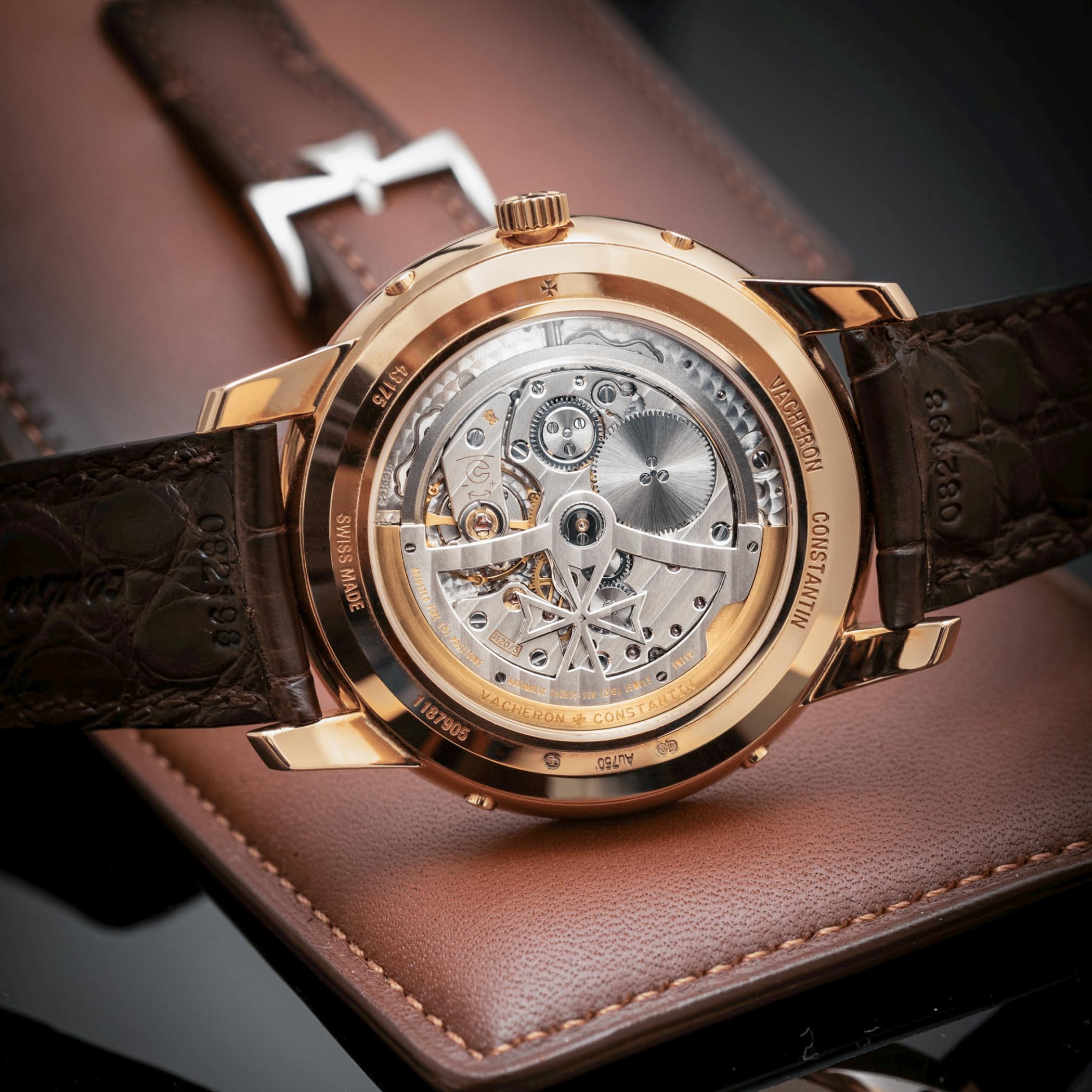



3 responses
Sorry all, I woudn`t wear this ugly one even if I got it for fre…
@Marco Just wonder, what would be qualified as being beautiful according to your taste?
Marco dans son opinion a été assez direct mais j’avoue… Rien de spécial surtout pour telle manufacture comme Vacheron, le prix largement exagéré